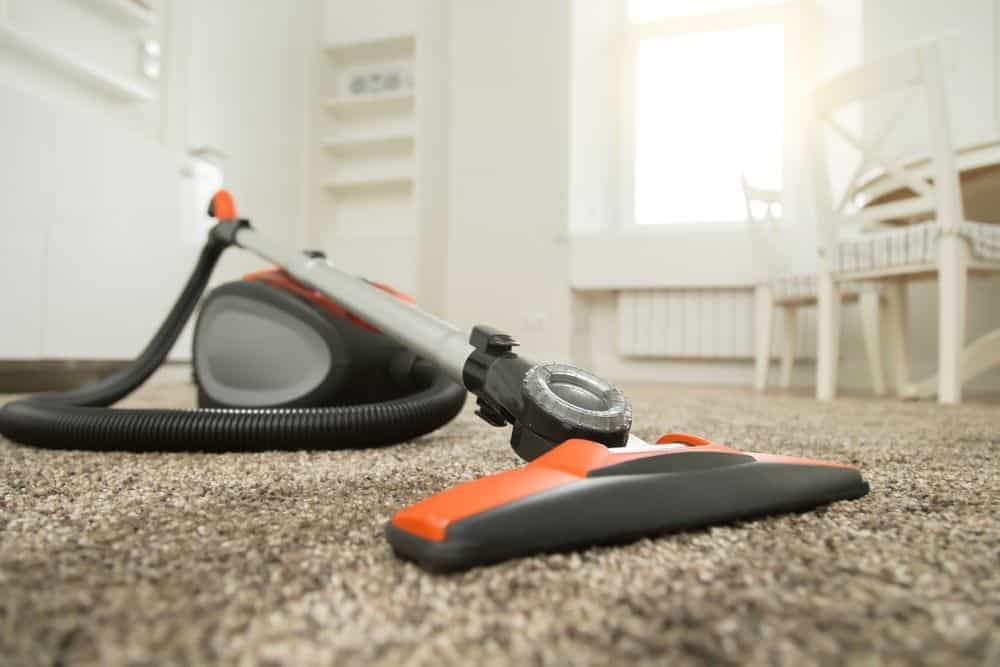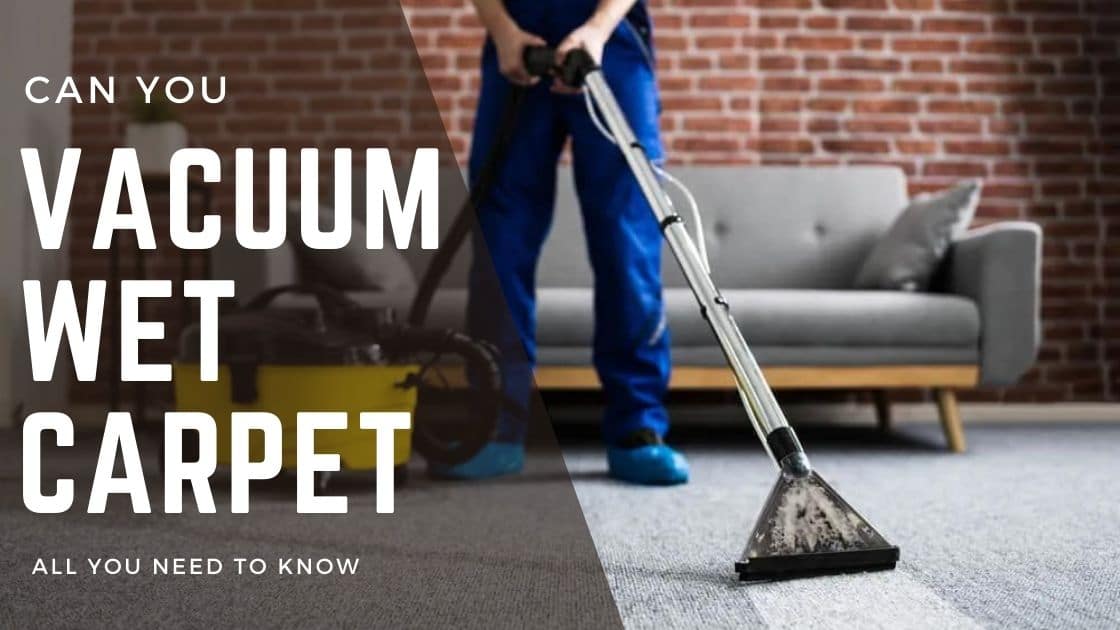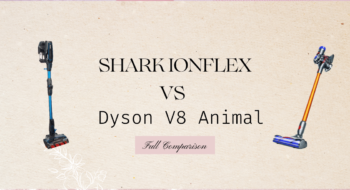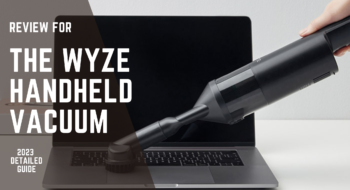Published by Hala Zaqqout on May 31, 2022 | Last updated on May 14, 2023
Did you know that germs and bacteria accumulate on wet carpets, then mildew and mold start to grow?
Luckily, your carpet isn’t permanently ruined. If you wonder “can you vacuum wet carpet?”, “can i use a regular vacuum on wet carpet?”. Stop here and read this article first. Keep in mind that the sooner you act and use the correct materials and methods, the better.
This Cleaners Advisor article answers your question “can you vacuum wet carpet?” and provides the best solution to dry a wet carpet, along with some alternatives you can use.
Why You Need to Know “Can You Vacuum Wet Carpet?”
It’s critical to dry out your carpet properly after cleaning, flooding, or a leak. Otherwise, the small space between the carpet padding and the floor creates a dark and moist environment where mold and mildew can form.
Mildew and mold will grow in a carpet between 24 and 48 hours after it has been exposed to water. If you don’t take action to get rid of the water and mold, they’ll continue to grow quickly.
Here are some signs that your carpet is infected with mold:
1. Smell
Musty or odor smell coming from your carpet.
2. Color
Discoloration on the carpet or padding.
3. Breathing difficulties
Family members experience allergic symptoms — a person with asthma might be more affected.
Before handling the procedure yourself or hiring a professional, look over these options.
Can You Vacuum Wet Carpet?

You may be wondering now ” can i use a regular vacuum on wet carpet?” Technically speaking, you can vacuum a wet carpet but NOT with a regular vacuum cleaner.
Using a regular household vacuum to vacuum a wet carpet is a horrible idea. You’ll not only ruin your vacuum, but you’ll also risk hurting yourself!
Your regular household vacuum cleaner is made to pick up dry objects and is not meant for water or spills. The main reason you want to avoid water is that the filter in your home vacuum is not able to handle liquids.
Dirt and filth stick to the sides of your vacuum’s internal tubes due to moisture, causing clogging, blockages, and bad odors. When there is moisture inside the vacuum, mold might grow.
Instead, use a wet/dry vacuum to get the job done properly. It can be your ultimate savior and the best choice here. This type of vacuum can be used for multiple purposes and can remove dirt and liquids from various surfaces.
How to Dry a Wet Carpet with Wet and Dry Vacuum?
Make sure that the wet and dry vacuum cleaner had the correct filter fitted. It’s crucial to note that many wet and dry vacuums have a separate float filter for vacuuming liquids, so make sure you’re not using the dry filter.
Vacuum the wet area of the carpet until no more water comes out. Even then, the carpet underlay may still be damp, so make sure there’s plenty of ventilation and don’t cover the previously wet area right away.
Make sure to check whether the drum has to be emptied regularly. Only if you’re drying a large area of carpet will this be an issue.
How Can You Dry a Wet Carpet?
If you don’t have access to a wet/dry vacuum cleaner, here are some alternatives for drying a wet carpet:
1. Baking Soda
Can you vacuum wet baking soda? Yes, but if you plan on using baking soda, you must avoid using it with your standard household vacuum cleaner. Baking soda works great for absorbing water, but you will need large amounts of it for the best results.
You must first generously apply baking soda to all wet areas, then wait for half an hour or an hour. After that, remove all of the baking soda from your carpet using a regular vacuum cleaner.
You may notice a bad odor after finishing the process, but don’t worry. To get rid of the bad odor, use a home spray.
2. Towels
Towels are one of the simplest ways to dry a wet carpet patch. However, this is only effective for small areas and is unlikely to dry the underlay. To absorb up as much water as possible, spread the towels over the wet area and walk over them.
It is more effective to walk and jump on the towels than to place them on the carpet or soak up the liquid with your hands.
Replace the wet towels with dry ones once they are completely saturated. Repeat the process until the towels are no longer absorbing any water. Even after drying with towels, make sure the room is ventilated to allow any remaining moisture to dry.
Make sure the room is ventilated even after drying with towels, as it’s important for any remaining moisture to dry.
3. Increase Ventilation
The faster a carpet dries, the better the airflow in the room is.
Open windows and consider using ceiling fans, hairdryers, household fans, or even a dehumidifier if you have one to help speed things along and get good air circulation in the room.
4. Dehumidifier
Water evaporates faster from carpets when the room has lower humidity. As a result, using a dehumidifier in a room with a damp carpet can speed up the drying process.
A dehumidifier reduces the humidity in the air, reducing the chances of mold or mildew. Check the dehumidifier’s tank regularly, as you’ll need to empty it regularly in a damp area.
Here’s how to dry a wet carpet using one of the methods above.
Can You Vacuum Wet Carpet FAQ
To Wrap Up
You should never use a regular vacuum cleaner on wet carpet. This can be dangerous! The best solution is to use a shop vacuum or professional wet/dry vacuum cleaner for quick cleaning.
A wet carpet can cause mold and mildew to grow, putting you and your family’s health at risk. So you need to dry it quickly using one of the methods above.
If you feel that the job might be too much for you to handle, don’t hesitate — call for professional help.
Still have any questions about “can you vacuum wet carpet”? Please let us know in the comments section below



![4 Best Vacuums for Car Detailing [Tested by Experts]](https://cleanersadvisor.com/wp-content/uploads/2021/12/Best-Vacuums-for-Car-Detailing-1-350x190.png)
![4 Best Vacuums for Tile Floors [Tested & Tried]](https://cleanersadvisor.com/wp-content/uploads/2021/12/Best-Vacuums-for-Tile-Floors-1-350x190.png)
![4 Best Vacuums for Laminate Floors [Tested by Experts]](https://cleanersadvisor.com/wp-content/uploads/2021/12/Best-Vacuums-for-Laminate-Floors-1-350x190.png)

![The Review of the Pure Clean Robot Vacuum [Tested in 2023]](https://cleanersadvisor.com/wp-content/uploads/2022/02/pure-clean-robot-vacuum-2-350x190.png)